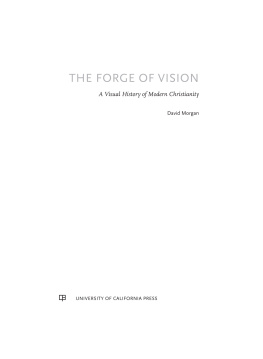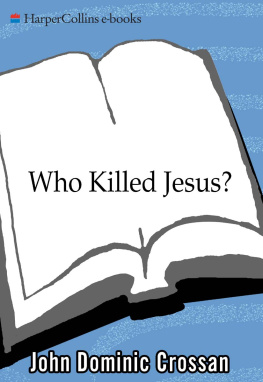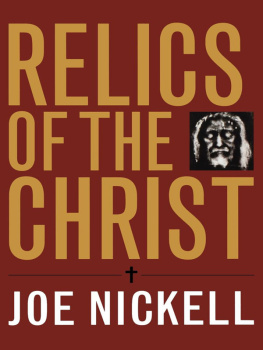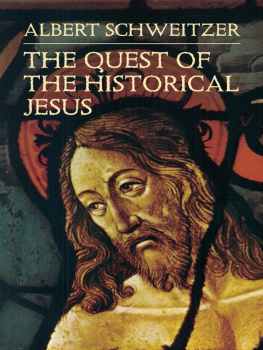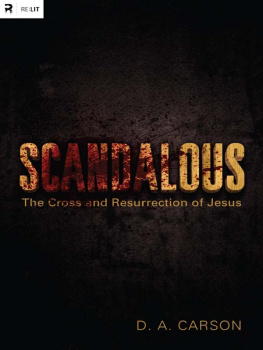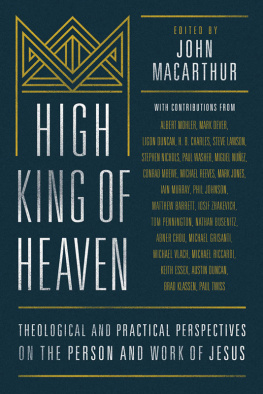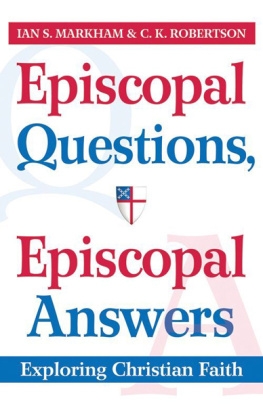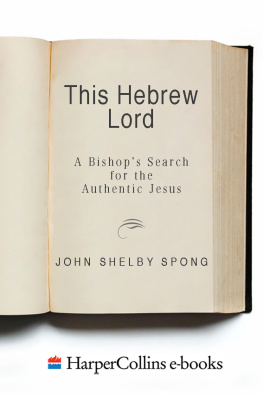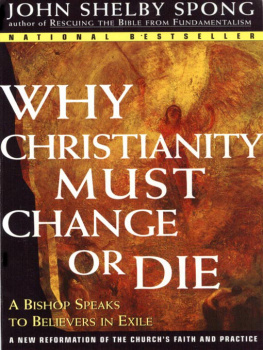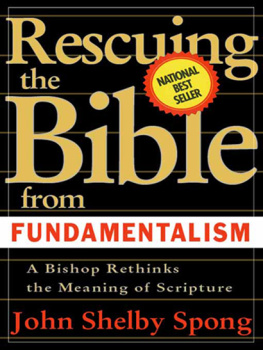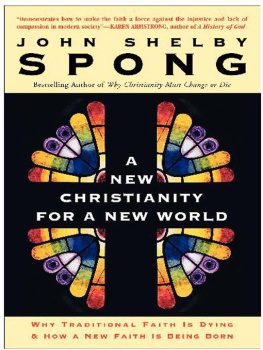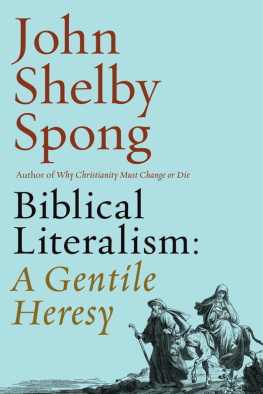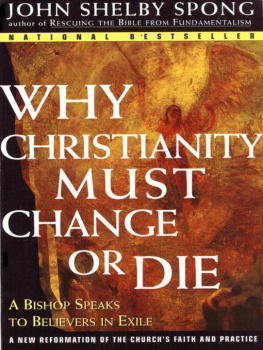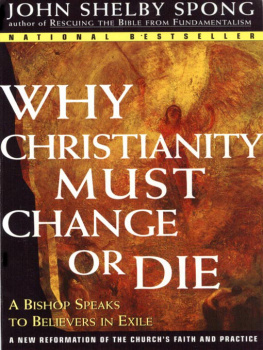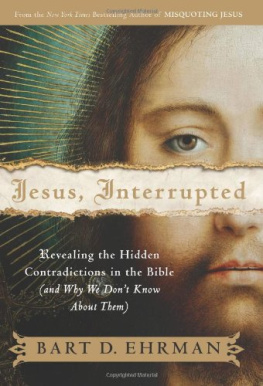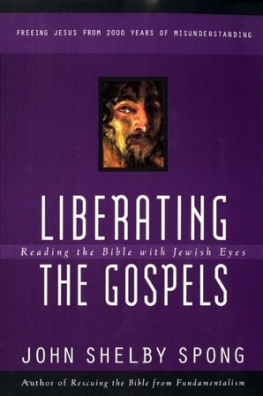Jesus Christ - Born of a woman: a bishop rethinks the birth of Jesus
Here you can read online Jesus Christ - Born of a woman: a bishop rethinks the birth of Jesus full text of the book (entire story) in english for free. Download pdf and epub, get meaning, cover and reviews about this ebook. City: New York, year: 2004;2009, publisher: HarperCollins e-books, genre: Religion. Description of the work, (preface) as well as reviews are available. Best literature library LitArk.com created for fans of good reading and offers a wide selection of genres:
Romance novel
Science fiction
Adventure
Detective
Science
History
Home and family
Prose
Art
Politics
Computer
Non-fiction
Religion
Business
Children
Humor
Choose a favorite category and find really read worthwhile books. Enjoy immersion in the world of imagination, feel the emotions of the characters or learn something new for yourself, make an fascinating discovery.

- Book:Born of a woman: a bishop rethinks the birth of Jesus
- Author:
- Publisher:HarperCollins e-books
- Genre:
- Year:2004;2009
- City:New York
- Rating:5 / 5
- Favourites:Add to favourites
- Your mark:
- 100
- 1
- 2
- 3
- 4
- 5
Born of a woman: a bishop rethinks the birth of Jesus: summary, description and annotation
We offer to read an annotation, description, summary or preface (depends on what the author of the book "Born of a woman: a bishop rethinks the birth of Jesus" wrote himself). If you haven't found the necessary information about the book — write in the comments, we will try to find it.
John Shelby Spong, bestselling author and Episcopal bishop of Newark, NJ, challenges the doctrine of the virgin birth, tracing its development in the early Christian church and revealing its legacy in our contemporary attitudes toward women and female sexuality.
Born of a woman: a bishop rethinks the birth of Jesus — read online for free the complete book (whole text) full work
Below is the text of the book, divided by pages. System saving the place of the last page read, allows you to conveniently read the book "Born of a woman: a bishop rethinks the birth of Jesus" online for free, without having to search again every time where you left off. Put a bookmark, and you can go to the page where you finished reading at any time.
Font size:
Interval:
Bookmark:
Born of a Woman
A Bishop Rethinks the Birth of Jesus
John Shelby Spong

For
Katharine Shelby Catlett
and
John Baldwin Catlett III
who have given to Chris and me
the joy of being grandparents
As long ago as 1973, when I wrote This Hebrew Lord , I added a footnote to chapter 15 that said, When this book was originally conceived I had planned to devote one unit to the interpretive envelope in which the Gospel story is wrapped: the birth narrative on one side and the resurrection on the other. But so massive was the material that I gathered that I decided to save it for a later publication. It amazes me even now that I laid out this future course for myself that long ago.
Seven years later I made good half of that commitment when, in 1980, The Easter Moment was published. This book was designed to explore that critical point in history at which the power of the gospel exploded onto the stage of the world. It focused on the nexus where faith and tradition intersect knowledge and secularity. My working title for that manuscript was A Case for the Resurrection to the Modern Mind. I am particularly pleased that Harper & Row reissued it in a revised paperback edition in 1987, and that even now it is being completely rewritten for a new decade under the title The Resurrection: Myth and RealityA Bishop Rethinks the Meaning of Easter .
Since The Easter Moment came out I have published five additional volumes. Never, however, did I lose the desire to look at the birth narratives of Jesus as intensely as I had examined the resurrection narratives, and to do it in a way that would be accessible to the average layperson.
Over the years since 1973, my theological and biblical conclusions have created wide debate, with responses ranging from hysterical anger to genuine appreciation. In those years I was significantly shaped by the feminist movement. It opened my eyes in new ways to see the oppression of women in both church and society, usually done in the name of God, the Bible, and sacred tradition. I was also drawn into an intense study of human sexuality and into the churchwide debate on changing patterns in sexual ethics. Particularly did my study lead me to a new understanding of the source and origin of homosexuality, which challenged all of my sexist and homophobic prejudices.
My conclusions in these areas, published under the title Living in Sin? A Bishop Rethinks Human Sexuality , had the effect of making me a symbol for moving beyond the conventional moral patterns and prevailing wisdom that mark the church's traditional understanding of both the role and place of women and the attitude toward our gay and lesbian brothers and sisters. Those who defined themselves as defenders of the faith of their fathers resisted my ideas with intensity and even with vicious personal attacks, but those who felt excluded from the traditions of the past saw in me a welcome sign of hope for a future inclusiveness in the body of Christ. Those whose ultimate loyalty is to an undisturbed ecclesiastical institution waffled as usual, in a vain search for some middle and safe ground. In a strange and fascinating way, the debate on human sexuality drove me back to the Bible. Those who supported the oppression and isolation of women in the church quoted the Bible to justify their continuing prejudice. Those who could not escape their deep, and in some cases unconscious, homophobia found in the literal texts of Scripture support for their condemnation of gay and lesbian people. So I wrote Rescuing the Bible from Fundamentalism to call the debate on Scripture to a new level of both scholarship and sanity. Once again the storms of controversy howled as would-be defenders of the Bible rose to attack my stance, usually without reading the book itself.
Finally, after those two best-selling volumes, I turned my attention once more to my long-yearned-for project of writing on the birth narratives of our Lord. I suppose I hoped that this endeavor would lower the decibels of the anger and enable me and others to engage the Bible on a level of significant scholarship. But, alas, there is no safe haven anywhere, and when consciousness is raised in one area, it is raised everywhere. In these familiar texts I now discovered definitions of women that were less than admirable. Even the poetry of the tales could not succeed in hiding that fact. The birth narratives also raised for me anew and in powerful ways the whole question of the authority and proper use of Holy Scripture in the life of the church. Even though I quite specifically addressed this theme in my last book, I could now take the tools developed in that volume and use them to bring the Christmas and Epiphany stories to a new level of intensity. When my diocese graciously created for me a sabbatical month each February, I took the opportunity to pursue this subject with total concentration at such wonderful places as Union Theological Seminary in New York City, Yale Divinity School in New Haven, Connecticut, Harvard Divinity School in Cambridge, Massachusetts, and Magdalen College at Oxford University.
In those great institutions I read the major contemporary voices in New Testament scholarship as they probed the truth of the birth narratives. The power of such male scholars as Raymond Brown, Edward Schillebeeckx, Joseph Fitzmyer, Michael Goulder, and Herman Hendrickx made significant contributions to my study; but so did the newly assertive feminine voices of Rosemary Radford Ruether, Anne Belford Ulanov, Elisabeth Schssler Fiorenza, Jane Schaberg, Margaret Miles, and Phyllis Trible.
Beyond that, I explored various aspects of mother worship, ancient and modern. I came to know the likes of Isis, Cybele, Artemis and Diana, with whom I had almost no familiarity. I met the Black Madonna. I sought to separate the Mary of history from the virgin Mary of myth. I tried to place myself inside the mentality of the first generation of Christians in order to appreciate the way they used the Hebrew Scriptures. I read anew the early Fathers (there were no early Mothers who wrote) and listened for the meaning behind the words as the gradual divinization of Mary began to occur in Christian history. I focused on the impact of that movement on real women. Finally, I read deeply the writings of Carl G. Jung, and those who might be described as Jungians, looking especially for the way the concepts of male and female were related in the psychic history of humankind.
It is fair to say, however, that out of all this background study, two people have shaped my thought on this subject far beyond any others, and a sense of indebtedness and deep appreciation requires that they be treated in a class by themselves. So, out of my previous list, I lift them up for particular emphasis.
First and foremost is the Reverend Dr. Raymond E. Brown, professor of New Testament at Union Theological Seminary in New York City, and the person I regard as the ranking New Testament scholar in the world. Because Ray Brown is the godfather to the son of a priest formerly in my diocese, I utilized that relationship to secure him as a lecturer in the New Dimensions series in the Diocese of Newark in 1977, just before his book The Birth of the Messiah was published. Those lectures, which introduced me to the substance of that book, were so stimulating that I could not wait to add the book to my library.
My habit as a scholar is to take one major theological or biblical book and to live with it intensely as my teacher for a full year. In 1986 I installed Ray Brown's Birth of the Messiah into that powerful role. It became my primary study book. I read it over the course of a year in small portions, four or five pages a day, checking all of its references, taking copious notes, and interacting with it deeply. That book became part of me, and in many ways this volume leans heavily on Ray Brown's insights. I have sought to give him proper credit in the notes, but I cannot adequately describe in notes his research that suffuses this entire book. I simply acknowledge that the very thoughts I seek to popularize in this volume root more significantly in Raymond Brown than in anyone else. I do not altogether agree with Professor Brown, as the reader will discover. I value the challenge offered to his conclusions by Michael Goulder and others, but I have been exceedingly enriched by him and owe him much. Very few laypeople will, in my opinion, read Raymond Brown; if they do, his use of Hebrew and Greek and his system of abbreviations (JBAP for John the Baptist, for example) will put them off. But if my readers find their appetites whetted for the master, I am happy to direct them to Raymond Brown's book, which is, in my opinion, the classic, the masterpiece in the field.
Font size:
Interval:
Bookmark:
Similar books «Born of a woman: a bishop rethinks the birth of Jesus»
Look at similar books to Born of a woman: a bishop rethinks the birth of Jesus. We have selected literature similar in name and meaning in the hope of providing readers with more options to find new, interesting, not yet read works.
Discussion, reviews of the book Born of a woman: a bishop rethinks the birth of Jesus and just readers' own opinions. Leave your comments, write what you think about the work, its meaning or the main characters. Specify what exactly you liked and what you didn't like, and why you think so.

